What are the flowers that bloom all year round?
These flowers bloom in many seasons, have a long flowering period and are easy to grow. You can still enjoy the fun of growing flowers in autumn and winter. Put a few pots of flowers and plants in the office or at home. When you are tired at work, you can look at the green leaves to relieve stress. After get off work, go home and water the flowers. Isn’t this kind of life a good combination of work and rest? So what kind of flowers and plants are suitable for us office workers to grow? It’s best to grow those that don’t look tacky and are easy to grow. I don’t know what type of potted plants you usually grow. Today, the editor will recommend several good-looking flowers to you.
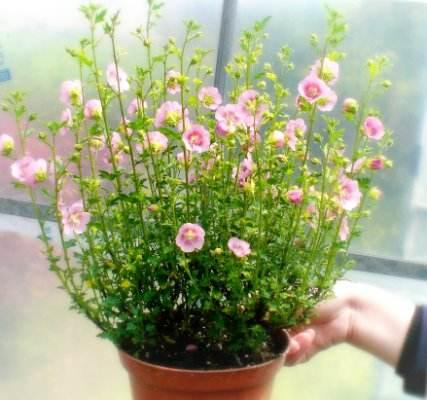
Orchid is a perennial green epiphytic flower. It has a unique flower shape and beautiful flower posture, which makes it a flower variety cherished by people. Raising orchids is like raising people, which requires careful care and cultivation, and a good attitude and accomplishment. But if you are worried about raising them well, don't worry, you can try Jianlan, which is an improved orchid variety that can bloom in multiple seasons and is not as common as the orchid varieties we often grow. It is a good choice. This is suitable for display in both the office and the home.
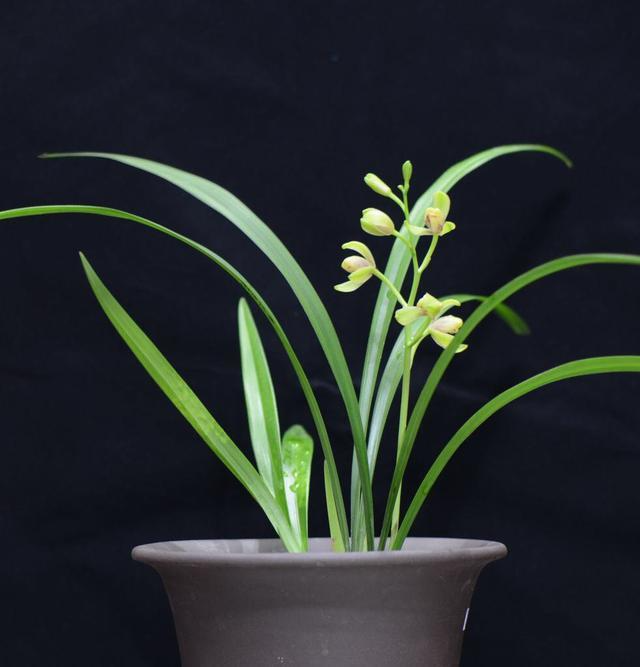
As an evergreen vine plant that blooms in autumn and winter, the fragrant vine has only gradually appeared in the market in the past two years. Its very resilient branches can climb along the climbing frame, and can also be freely wound according to your favorite shape. We can grow it on the balcony, so that it can climb along the balcony railings, and then your balcony will become a flower wall that people envy.
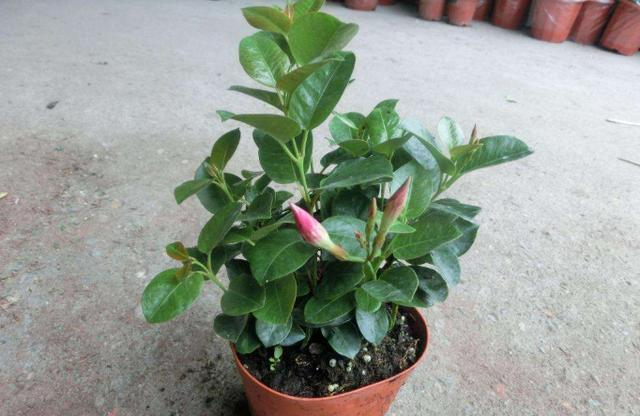
Miniature roses are also popular flowers in recent years. Compared with other flowers, they are more noble. Miniature roses are the cute little sisters in the rose family. The plants are short and cute, with rich colors. They can bloom all year round and have high ornamental value. They are very suitable for potted flowers.
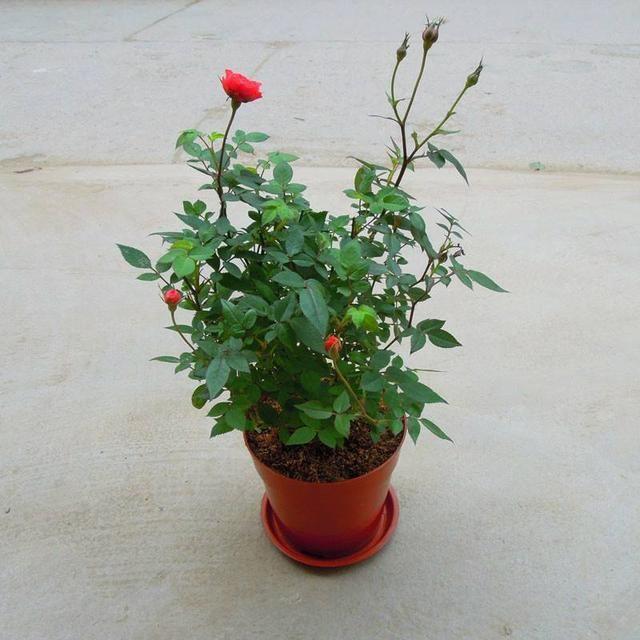
In fact, you don’t have to worry about the season when growing flowers and plants. It is also a kind of enjoyment to feel the growth and changes of flowers in different seasons throughout the year. The different growth results of plants are also different. For those who really love to grow flowers, they generally will not miss their various growth stages.
 anthomaniac Today's headlines signed a home furnishing author 08-02 11:21
anthomaniac Today's headlines signed a home furnishing author 08-02 11:21Thank you for the invitation. Many flower growers have a dream of having a garden. They hope to plant their favorite potted green plants on their balcony and enjoy the joy of success when the flowers bloom. It would be an even better thing if the flowers could bloom all year round. Today, I will introduce to you several potted green plants that are very easy to grow and can bloom all year round.
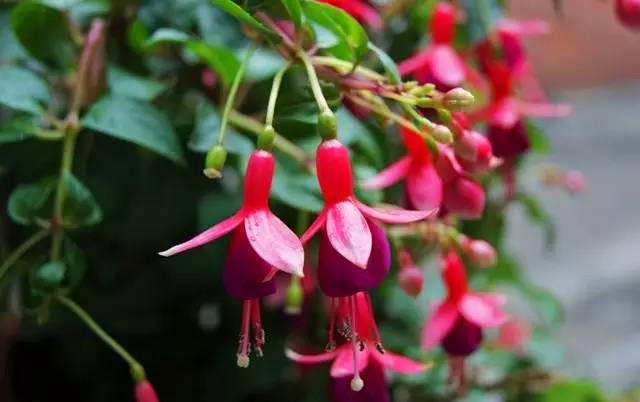
1. Hoya
The reason why I talk about Hoya first is because flower lovers really love Hoya. Various types of Hoya bloom spherical flowers of various colors, which are very beautiful. The hanging branches of Hoya are suitable for hanging on window bars. As long as there is sufficient light, the flowers will bloom one after another. You can grow Hoya well by caring for it just like growing Chlorophytum.
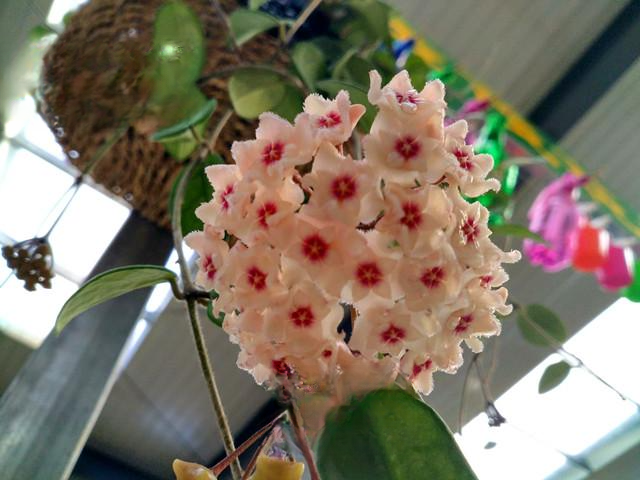
2. Euphorbia pilosa
Euphorbia milii is also called iron hibiscus. Its branches are covered with thorns and small pink flowers bloom on the branches. Euphorbia milii likes relatively dry potting soil and must have enough light to allow it to bloom more flowers. However, if there are children at home, it is not recommended to grow this thorny plant to avoid hurting the children.
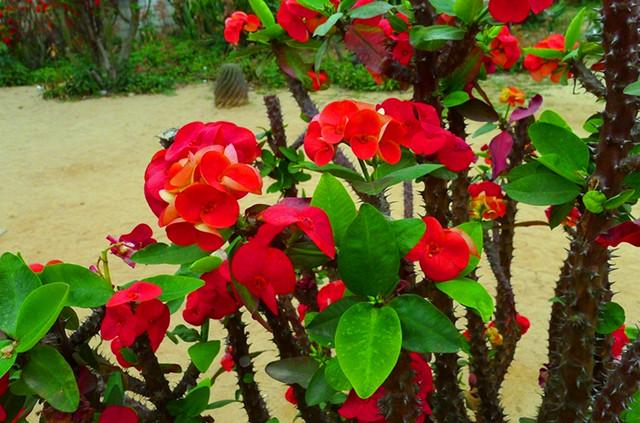
3. Four Seasons Camellia
Four-season camellia, also known as four-season azalea tea, has hard leathery leaves and full, bright red flowers. It is very ornamental when placed at home. It mainly grows in the south and can bloom all year round. It is suitable to be placed on the balcony. It needs sufficient light and good ventilation. It is usually kept moist and compound fertilizer can be applied once a month.
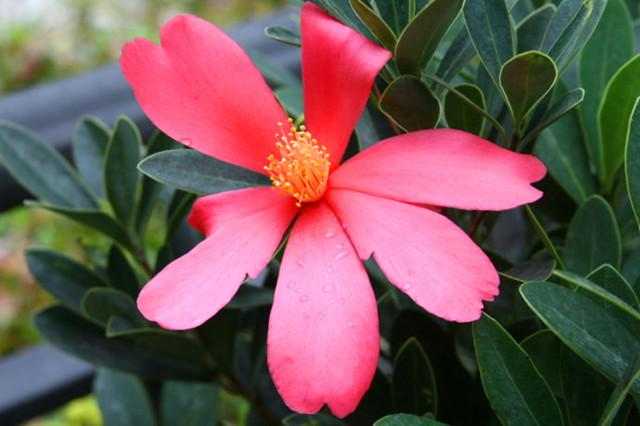
4. Fragrant vine
The fragrant vine is a vine that blooms morning glory-shaped flowers in red, pink and white. If you let it climb along the window fence, the branches will be full of flowers, which will be the most beautiful scenery in the home. The maintenance method is very simple. Do not let it lack water. Apply organic fertilizer once a month and ensure sufficient light.
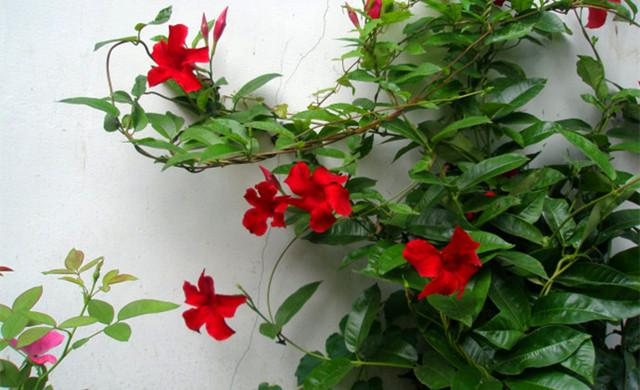
In addition to the above-mentioned types that can bloom all year round, there are many more, including Begonia, Plum, Anthurium, and Smooth Sailing, etc., or you can go to the flower market to find some green plants that you can enjoy not only the flowers, but also the leaves and roots. This way, the balcony will be better.
 Flower Growing Encyclopedia Toutiao signed author 08-30 21:25
Flower Growing Encyclopedia Toutiao signed author 08-30 21:251. Rose.
When it comes to flowers with a long flowering period, the first thing that comes to mind is the rose. When the rose blooms, it is very beautiful and the flowering period is also very long, so people call it the "monthly red".
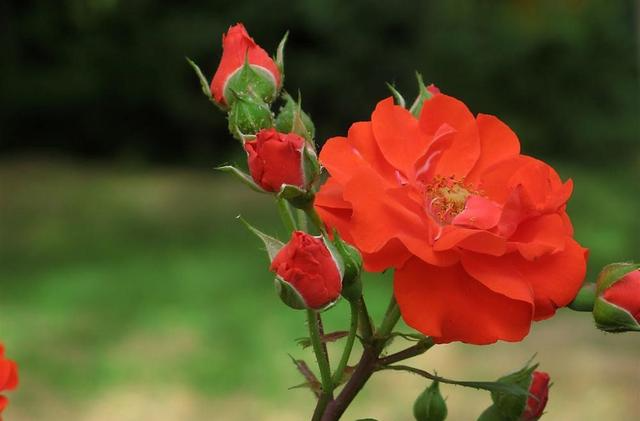
Second, Fuso.
Hibiscus is widely cultivated in southern China. Its flowers are large and bright, clusters of them are very beautiful, and they bloom almost all year round.
3. Anthurium.
Anthurium has different names in different regions, such as Anthurium, Goose Palm Red, etc. The flowers are beautiful. Under suitable conditions, Anthurium can bloom all year round.
4. Orchid.
Orchids are beautiful and graceful, and they have a scholarly feel when kept at home. In addition to their noble appearance, orchids can also bloom for a long time if properly cared for.
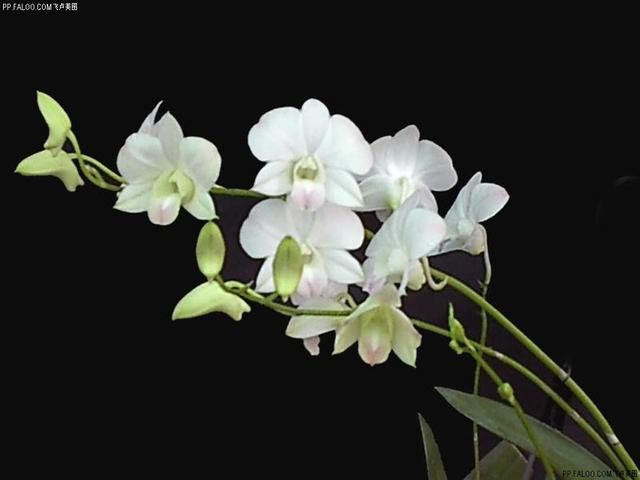
5. Catharanthus roseus.
The name of the flower is auspicious, and the growth is pleasing and the flowers are intricate. During the growth process, every time new leaves grow, the flower buds will soon emerge. Therefore, once the vinca flower blooms, the flowers are in clusters, often blooming, and look particularly lively.
6. Fuchsia.
Fuchsia, with its gorgeous flowers hanging down, looks very unique. Some places also call it lantern flower, which is very descriptive. Under suitable conditions, Fuchsia can bloom all year round, especially in spring and autumn.
7. Yellow Sophora japonica.
The flowers of the yellow acacia are large and bright yellow. They bloom almost all year round, with the most blooming in spring and summer.
8. Bougainvillea.
Bougainvillea has many flowers and they are extremely beautiful. The clusters of flowers are magnificent and spectacular from a distance. As long as the temperature is suitable and the sunlight is sufficient every day, Bougainvillea can bloom all the time.
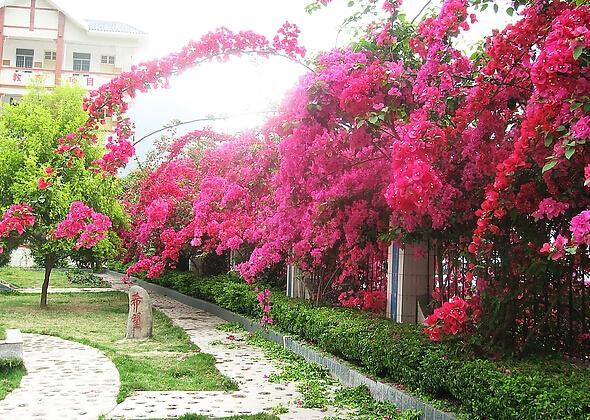
9. Lyre leaf coral.
Lyria lyreata is a common flower used in garden landscaping. Although the flowers are not large, the advantage is that the flowering period is long.
 Liao Fan 11-19 11:52
Liao Fan 11-19 11:521. Begonia
[Flower language] Friendly and amiable.
Begoniaceae, also known as melon seed begonia, glass begonia, clam begonia
Origin: Native to the undergrowth of low-latitude and high-altitude areas in Brazil.
Morphological characteristics: Perennial evergreen herb, with erect, slightly fleshy stems, 25 cm to 40 cm high, with well-developed fibrous roots; leaves are ovate to broadly ovate, oblique at the base, green or purple-red; monoecious with different flowers, axillary cymes, flowers in red, pink and white, single or double petals, and many varieties.
Habits:
Begonia likes sunlight, is slightly shade-tolerant, is afraid of cold, likes warm, slightly humid environment and moist soil, but is afraid of heat and waterlogging. Pay attention to shade, ventilation and drainage in summer.
Cultivation methods
1. Temperature The optimum temperature for the growth and development of rose begonia is 8℃~22℃. The key point of home maintenance is to keep warm in winter, and the minimum temperature should not be lower than 5℃. Since rose begonia is still in the growth and flowering period in winter, it should be placed in a sunny south-facing place indoors, such as indoor windowsills. But be careful not to be too close to the heater to avoid burning branches and flowers; when the high temperature lasts above 28℃ in summer, cooling measures should be taken, such as placing it in an air-conditioned room or shading it at noon.
2. The soil in the watering pot should be kept moist, not dry or too wet; too dry will lead to water loss and withering, too wet will cause root rot. It is best to use a humidifier to increase the air humidity, or you can use a sprayer to spray fine mist on the leaves until the leaves are moist, but do not spray the mist on the flowers.
3. Fertilization In the process of caring for rose begonia, regular fertilization is particularly important. For seedlings, nitrogen fertilizer is mainly used to promote its growth and development. As the plant grows, the amount of nitrogen fertilizer should be reduced, and the content of phosphorus and potassium fertilizers should be gradually increased. The amount of fertilizer should be increased before flowering, and foliar spraying can also be carried out appropriately. The spray should be even, and both sides of the leaves should be sprayed.
4. During the growth period, shaping and pruning should be done by pinching the top of the plant to encourage the sprouting of side branches to achieve a fuller plant shape. Excess flower buds should also be removed in time to avoid a large consumption of nutrients and affect the development of other flowers.
2. Vinca roseus
Vinca roseus Botanical name: Vinca roseus
Other names: Ririchun, Ririxin, Ririchunhua, Four-season Spring, Five-petal Plum, Wild Goose Red
Origin: Madagascar, India, there are many horticultural cultivars.
It is native to the Mediterranean coast, India, and tropical America. China has a short history of cultivating Vinca roseus. It is mainly cultivated in the south of the Yangtze River. It is more common in Guangdong, Guangxi, Yunnan and other provinces (autonomous regions). At present, various provinces and cities have introduced many new varieties of Vinca roseus from abroad for potted plants and planting troughs. Due to its strong heat resistance, long flowering period, bright colors, and rapid development, it has occupied a certain position among herbaceous flowers.
Catharanthus roseus is a perennial herb. The stem is erect and branched. The leaves are opposite, oblong, with short petioles, entire margins, smooth and hairless on both sides, and the main vein is white and obvious. The inflorescence is terminal. The flowers are red, purple, pink, white, yellow and other colors. The corolla is butterfly-shaped with 5 lobes, and there is a dark hole in the center of the flower. At the top of the young branches of Catharanthus roseus, two flowers emerge from the axils of each leaf when a leaf grows. Therefore, it has many flowers, a long flowering period, luxuriant flowers, and is full of vitality. It blooms continuously from spring to autumn, so it has the beautiful name of "Daily Spring".
Catharanthus roseus prefers a warm, slightly dry and sunny environment. The suitable temperature for growth is 18-24℃ from March to July, 13-18℃ from September to March of the following year, and the temperature in winter is not lower than 10℃.
Catharanthus roseus is afraid of waterlogging. Do not water the pot soil too much, as excessive moisture will affect its growth and development. Especially for plants that spend the winter indoors, watering should be strictly controlled. It is better to keep it dry, otherwise it is very easy to freeze. For open-field cultivation, pay attention to timely drainage during summer showers to avoid waterlogging and the death of the entire plant.
Catharanthus roseus is a light-loving plant that must have sufficient sunlight during its growth period. Its leaves are green and shiny, and its flowers are brightly colored. If it grows in the shade for a long time, its leaves will turn yellow and fall off.
It prefers fertile and well-drained soil, tolerates barren soil, but avoids alkaline soil. Hardened, poorly aerated clay soil will result in poor plant growth, yellow leaves, and no flowering.
Vinca rosea flower language: happiness, memory
3. Euphorbia
Product name: Euphorbia pilosa /Begonia thornii, Kylin thorn, Kylin flower
Habits: Prefers warm, humid and sunny environment. Slightly shade-tolerant, but afraid of high temperatures, relatively drought-tolerant, not cold-tolerant. Loose, well-drained leaf humus is best. If the temperature is low in winter, it will have a short-term dormancy phenomenon. Widely cultivated in the tropical and temperate zones of the Old World; cultivated in both the north and south.
Flower language: stubborn yet steadfast, gentle yet loyal, brave yet elegant.
It has the following major features:
1. Repot the pot every spring, and do not water too much. Sufficient water is needed during the summer and autumn growing season, and fertilizer should be applied once a month. The temperature is low in winter, the leaves fall off, and the plant enters a dormant period. The soil in the pot should be kept dry. During the flowering period from March to December, the flowers can bloom continuously if the soil moisture is kept moderate. If the room temperature is above 15℃ in winter, the plant can continue to bloom. If the plant grows too crowded and dense, it can be pruned before new leaves sprout in spring.
2. The nature of Euphorbia pilosa is special. It grows slowly, only about 10 cm per year, but it has a long life span and can live for more than 30 years in potted plants. It has a long flowering period and can bloom all year round if the light and temperature are appropriate.
3. The branches of Euphorbia milii are not easy to branch, and they will grow very long, with few flowers and messy posture, which affects the appearance. Therefore, they must be pruned in time every year to make more new branches and more flowers. Generally, two new branches can be produced after the branches are cut.
Euphorbia milii has a well-developed root system and grows vigorously, so it can be used as a rootstock for grafting fairy fingers and Christmas cactus. However, it has a shallow root system, runs horizontally for a long distance, and has few root hairs.
Euphorbia milii likes warmth and is not cold-resistant. It grows best at around 22℃ during the day and around 15℃ at night. If the temperature is maintained at 15℃ to 20℃ in the greenhouse, it can bloom all year round. If the temperature drops to 10℃, it will shed its leaves and enter a semi-dormant state, and will sprout new leaves in the next spring and continue to bloom.
4. Euphorbia pilosa likes light. The more sunlight there is before the flowers bloom, the brighter and more eye-catching the flowers will be. If there is insufficient light, the flowers will be dull. If they are placed in the shade for a long time, they will not bloom. Also, pay attention to maintaining air circulation.
5. For Euphorbia pilosa, you can use culture soil with hoof horn slices as base fertilizer. Fertilize once every half a month during the growing season. Stop fertilizing after the beginning of autumn. Avoid using fertilizers with oil to prevent root rot.
6. Euphorbia pilosa is drought-tolerant. Water it when the soil is dry and when it is wet in spring and autumn. Water it once a day in summer. Prevent waterlogging in rainy season. Do not water it in winter unless it is dry. The pot should not be kept wet for a long time. Water should also be controlled during the flowering period. Too much water can easily cause flowers to fall and roots to rot.
4. Ixora
Lxora chinensis (Latin name: Lxora chinensis), also known as Yingdan, Xiandanhua, and Bairihong, is a plant of the genus Lxora in the Rubiaceae family. It is the national flower of Myanmar. The plant is short, with beautiful flowers and leaves, and rich colors, including red, orange, yellow, white, and two-color. It is planted in the open field in southern China and is suitable for courtyards, hotels, and scenic spots. It is staggered in height, with bright colors and excellent landscape effects. In southern Guangxi Province, China, people are accustomed to calling it wood hydrangea. Lxora chinensis has a long flowering period and can bloom from March to December every year. It needs to be shaded in summer when cultivated in the north. Pay attention to fertilization and pinching during the growth period to promote its branching. It is used for viewing in greenhouse potted plants in the north, and for garden cultivation and arrangement in warm areas.
It likes a warm, humid and sunny environment. It is not cold-resistant, but can tolerate semi-shade, and is not resistant to water and strong light. The suitable temperature for the growth of Ixora is 15-25℃, 24-30℃ from March to September, and 13-18℃ from September to March of the following year. The winter temperature is not lower than 0℃, and it is easy to suffer frost damage if it is too low. On the contrary, Ixora is resistant to high temperatures and can grow normally above 32℃. In general, Ixora has a strong adaptability to temperature. Ixora likes moisture and is afraid of dryness. Sufficient water is needed during the growth period of stems and leaves, and keeping the pot soil moist is conducive to the germination of branches and the growth of leaves. However, long-term excessive moisture can easily cause partial root rot, affecting growth and flowering. If the soil is too dry or sometimes dry and sometimes wet, and the water supply is not timely, leaves will fall.
Ixora needs plenty of sunlight, especially during the growth period of stems and leaves. In sufficient sunlight, the leaves are emerald green and shiny, which is conducive to the formation of inflorescence, neat flowering and bright color. It can also grow in a semi-shady environment, but the leaves are light green and lack luster, the flowers are few and the color is lighter. However, proper shading during strong light in summer can extend the flowering period.
[Soil] The best soil for Ixora must be fertile, loose and well-drained acidic sandy soil. If it is potted, it is best to use a mixture of culture soil, peat soil and coarse sand.
[Watering] Ixora likes moisture and is afraid of dryness. Sufficient water is needed during the growth period of stems and leaves. Keeping the pot soil moist is conducive to the germination of branches and the growth of leaves.
[Temperature] The suitable temperature for the growth of Ixora is 15-25℃, 24-30℃ from March to September, and 13-18℃ from September to March of the following year. The winter temperature should not be lower than 0℃, otherwise it will be easily damaged by frost.
[Fertilization] Apply liquid fertilizer once every half a month during the growing season using a mixture of nitrogen, phosphorus, potassium, ferrous sulfate and horseshoe slices in a ratio of 1:1:1:2:3 and add water to make it decomposed and fermented.
[Pruning] Pruning is usually done in spring after the plants are taken out of the house. It is mainly to properly thin the branches of the plants to facilitate ventilation and light. In addition, proper pinching during the flowering period can make them produce more buds and bloom.
The dragon boat flower has another very special flower language, which is to compete for the first place. A positive spirit. Legend has it that every year during the Dragon Boat Festival, the people who row dragon boats will put dragon boat flowers on the dragon boats to ward off evil spirits and seek good luck. The dragon boat flower is an auspicious flower and is also relatively easy to grow. It is also highly decorative.
5. Sunflower
Origin: Brazil
Other name: sunflower
Uses: flower beds, flower stands, potted flowers, greening
Characteristics: Portulacaceae Portulaca genus is an annual herb, about 10cm tall, with fleshy stems and leaves, cylindrical leaves, clustered flowers at the top, single petals, mostly 6, in purple, bright red, pink, white, yellow and other colors, many stamens, capsule, cracks when ripe, contains many small seeds with metallic luster, fruit ripens in July-August.
【Cultivation method】:
Propagate by sowing or cuttings. It can be sown in spring, summer, autumn and winter. At 20℃, the seeds will germinate about 10 days after sowing. The soil should be thinly covered, and it can grow without soil. It will germinate in about 20 days at 15℃. Cuttings are mostly used for double-petal varieties. In summer, the cut branches are used as cuttings, and flower buds will appear after cutting. There is no need to bring soil when transplanting the plants. There is no need to water them frequently during the growing period.
 Explanation 198411-14 19:22
Explanation 198411-14 19:22Before growing flowers, check your lighting conditions. If the balcony has sufficient sunlight, you can grow sun-loving plants. If the sunlight is insufficient, you can only grow some gesneriaceae or ferns. If you do not have enough sunlight and insist on growing plants that need sunlight, there are only two results: one is that the plants will not bloom and grow too tall, and the other is that they will die.
Sun-loving plants:
Bulbs:
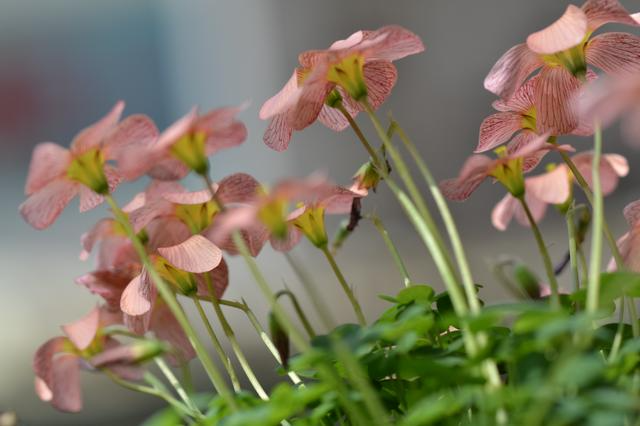
Oxalis: blooms from August to April, and blooms for half a year
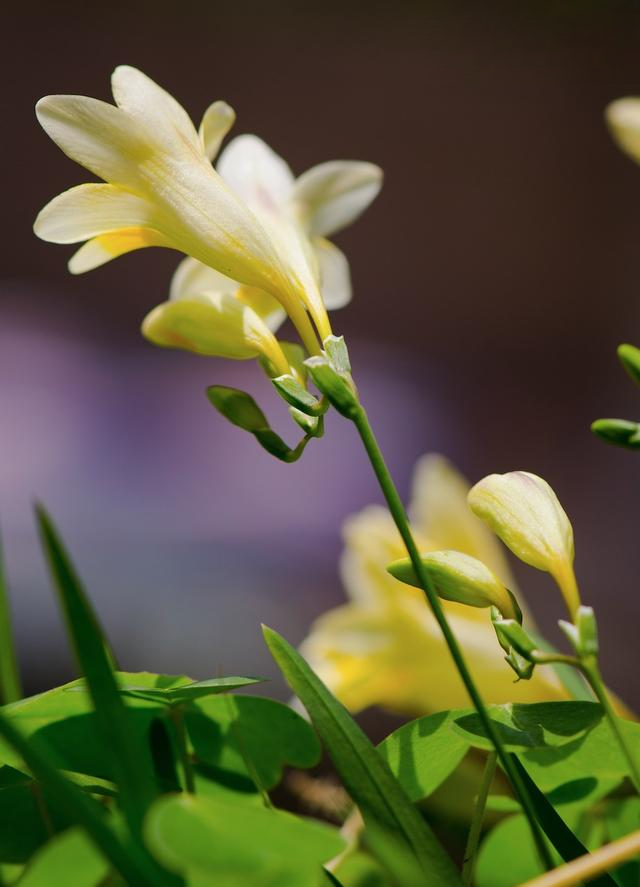
Freesia: Also called Freesia, it is planted in autumn, blooms in winter, and hibernates in summer. It has a strong fragrance.
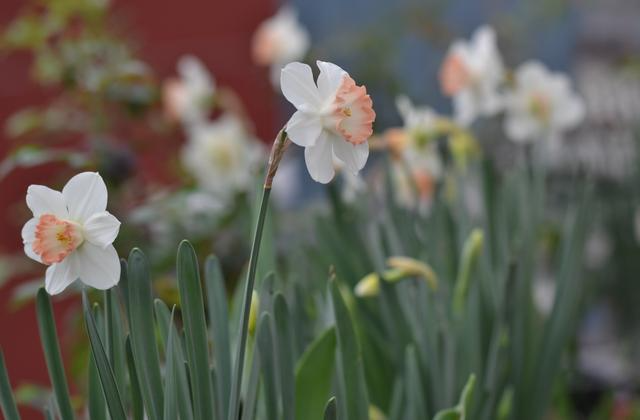
Daffodils: Unlike Chinese daffodils, daffodils can bloom again. Plant them in autumn, bloom in spring, and harvest in summer.
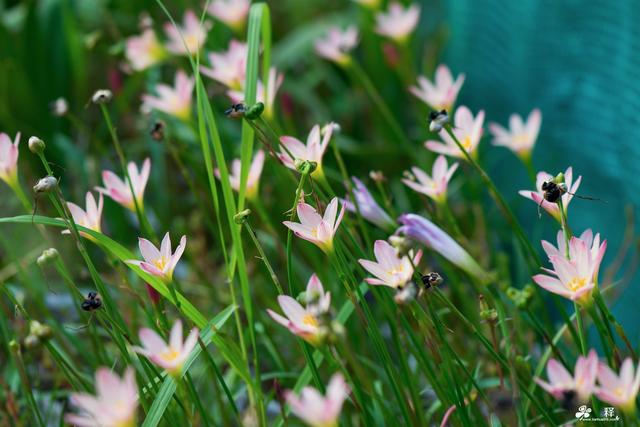
Zephyranthes: Planted in spring, blooms in summer. Usually it blooms after a rain, so it is called Zephyranthes.
Grass and flowers:
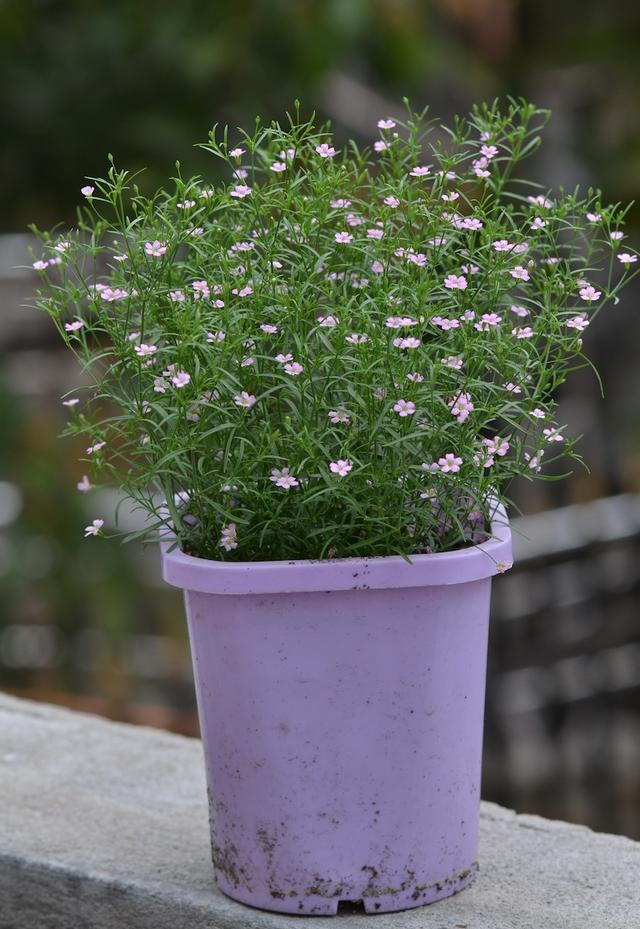
Garden Bride: Sow in spring and bloom in summer. The flowers are small but very dense and super beautiful.
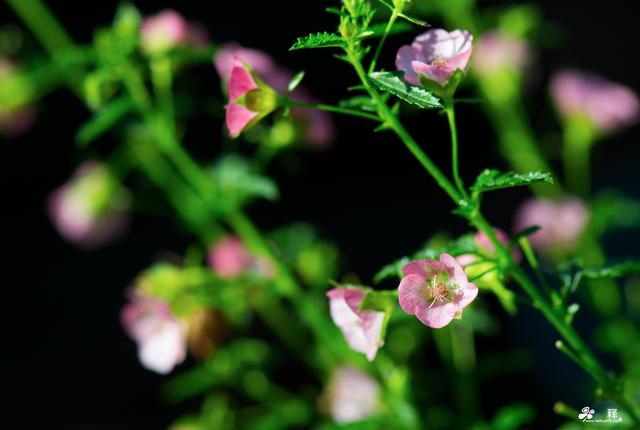
Hibiscus truncatum: Hibiscus truncatum is actually a small shrub that can grow quite large. It usually blooms except in winter.
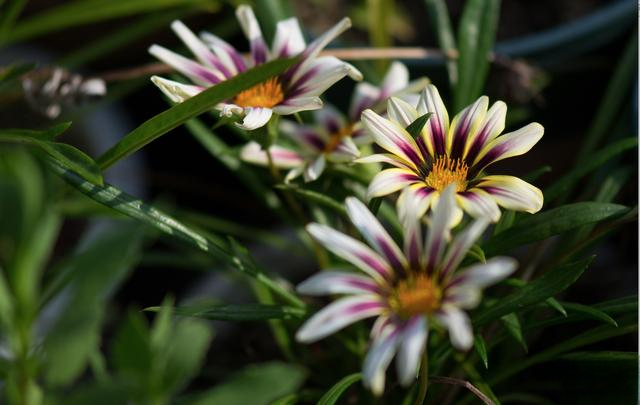
African violet: Planted as seedlings in spring, it blooms from summer to autumn.
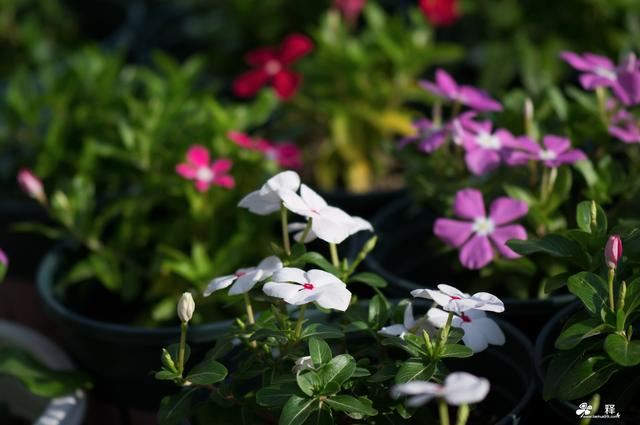
Catharanthus roseus: sow and raise seedlings in spring, bloom from summer to autumn.
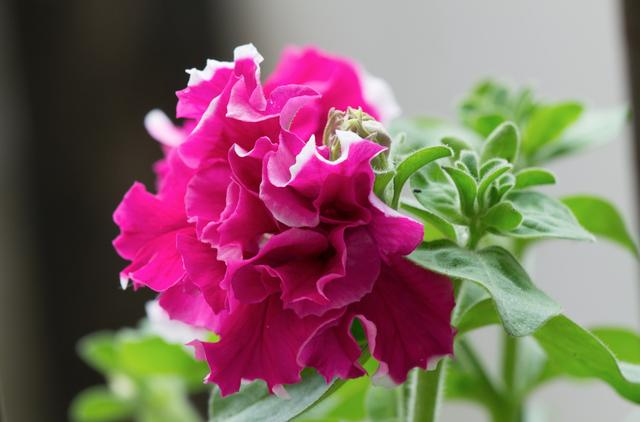
Dwarf bull: Dwarf bull blooms all year round. The picture above shows a double-petaled dwarf bull, which is not very good. If it is a single-petaled dwarf bull, it will look very beautiful when it blooms.
Rose category:
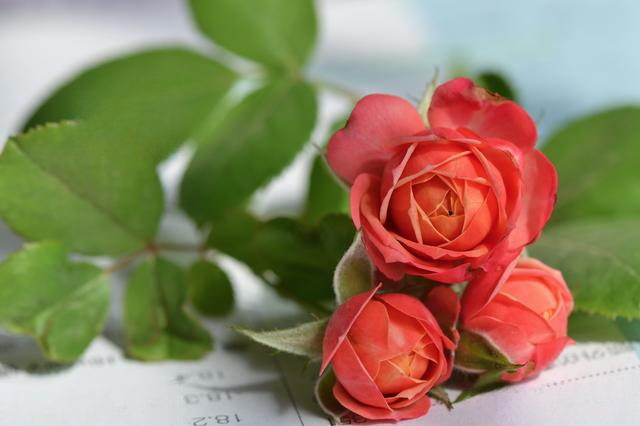
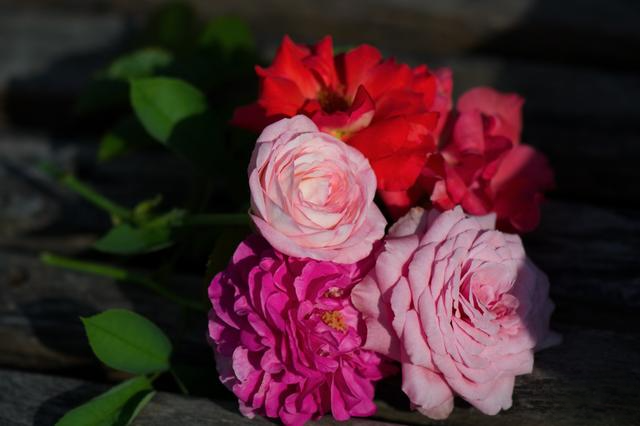
Rose is a large category, with too many varieties, and there are thousands of them already included. Roses are divided into micro roses, shrubs, and vines. Balcony families are suitable for growing micro roses, and those with land can grow vines. However, roses are a medicine jar, and there are diseases and pests at any time. Red spider mites, thrips, or black spot disease are all a problem.
Geranium: Users in the north highly recommend planting geraniums, but they need to be moved indoors to keep warm in winter.
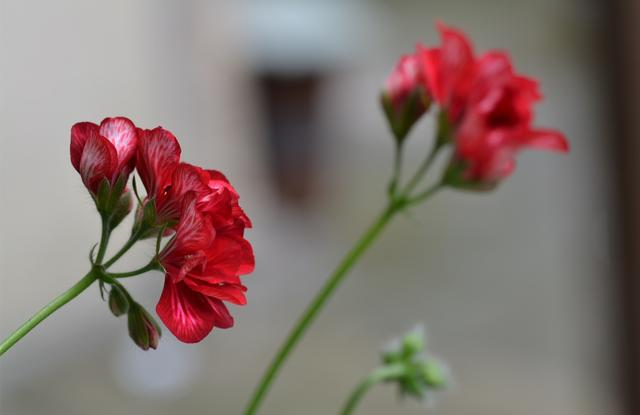
Geranium Picasso
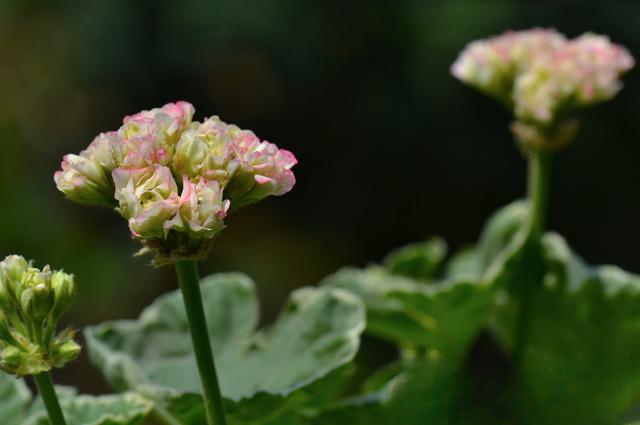
Geranium White Rim Apple Bowl
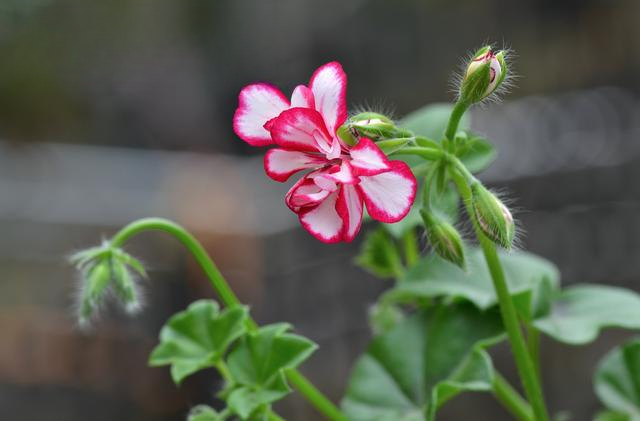
Geranium Loretta
Shade-loving plants: There are relatively few types of shade-loving plants, and they are basically Gesneriaceae. So if there is usually little sunlight on the balcony and you want to see flowers, the first choice is to grow Gesneriaceae.
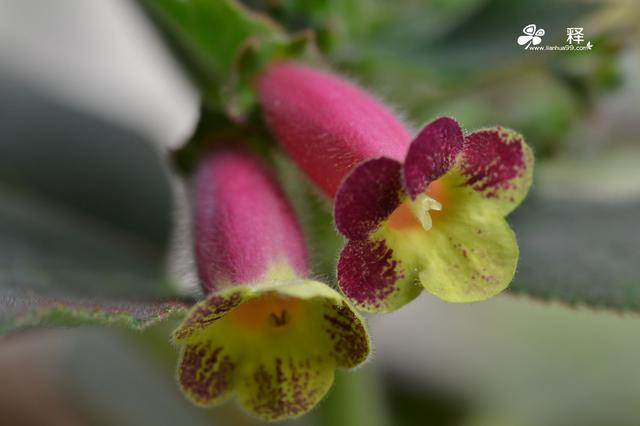
Cat: The scientific name of cat is Chionyma variegata, which is easy to grow and very colorful. Plant the bulbs in spring and they will bloom in summer.
 Gloxinia: Gloxinia is actually a bulb, but it is also a Gesneriaceae. The light does not need to be so high, but it can also tolerate full sunlight. The bulb can be planted in all seasons, and the general flowering period is from spring to autumn. As long as you give it enough fertilizer, you can guarantee that it will bloom for half a year
Gloxinia: Gloxinia is actually a bulb, but it is also a Gesneriaceae. The light does not need to be so high, but it can also tolerate full sunlight. The bulb can be planted in all seasons, and the general flowering period is from spring to autumn. As long as you give it enough fertilizer, you can guarantee that it will bloom for half a year
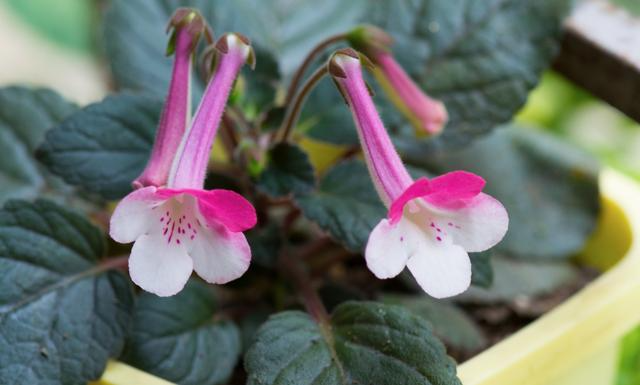
Long-tube flower: Long-tube flower is relatively small, suitable for windowsills. Generally, the bulbs are collected in autumn, planted in spring, and bloom in summer.
In fact, there are many flowers suitable for home cultivation, and it is impossible to introduce them all in a few words. Everyone is welcome to follow my Toutiao account, and I will update flower-growing knowledge regularly.

 Huang Dazhi 09-19 09:41
Huang Dazhi 09-19 09:41The sunny balcony is suitable for roses, which bloom in colorful colors all year round. However, judging from the pictures, the space is still relatively limited. You can consider the classic Dutch balcony series, which has a relatively short plant shape but huge flowers.
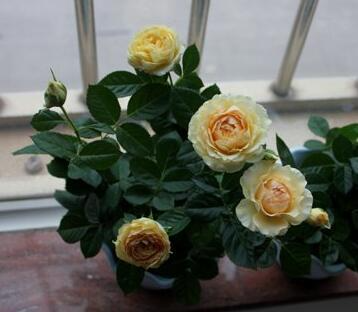
Saturn King
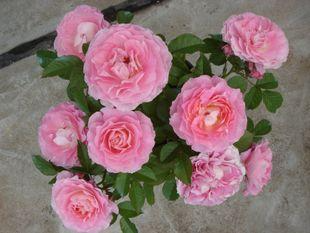
Sea God King
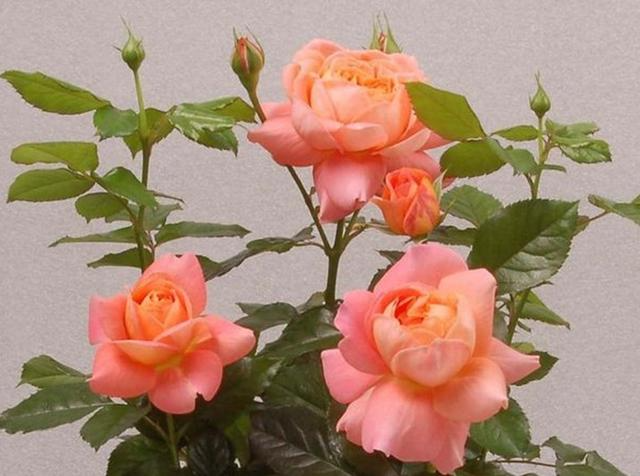
Sun King
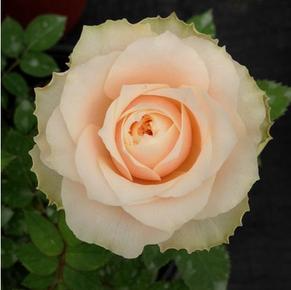
Comet King, etc., can also be paired with some low-growing miniature roses suitable for potted plants, such as Green Ice
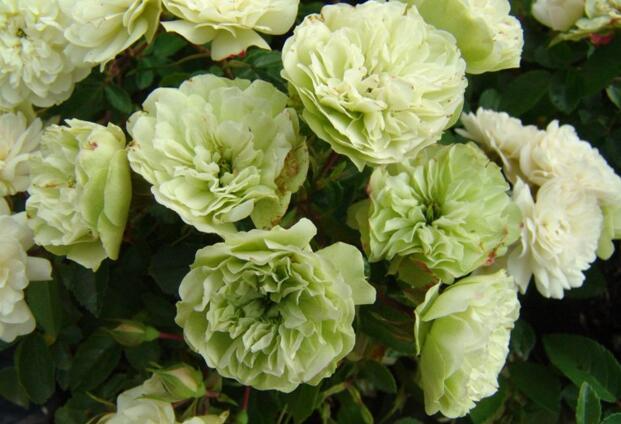
Bell Fairy
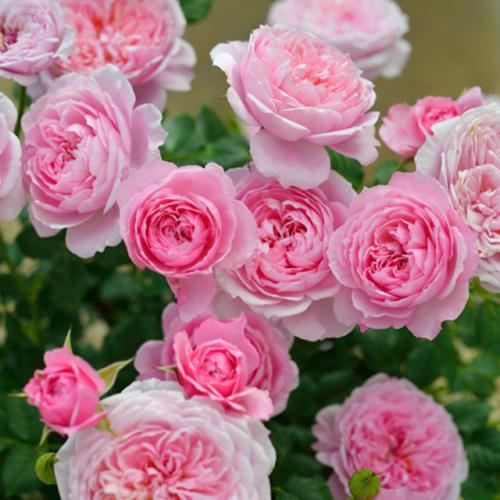
Wait, in addition, the balcony potted flowers that have become popular in recent years, such as blue snow flower, have a very long flowering period. If well cared for, they can bloom almost all year round.
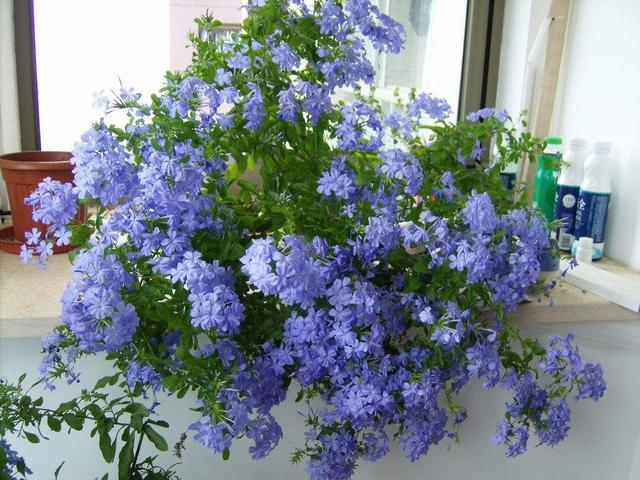
If space permits, it is a good choice to match it with some small-sized Dew Microflowers.
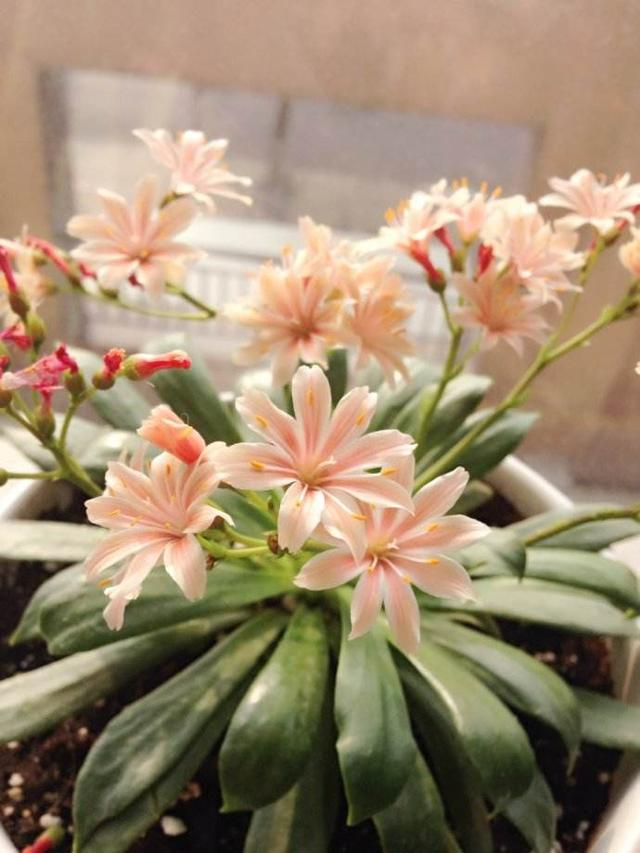
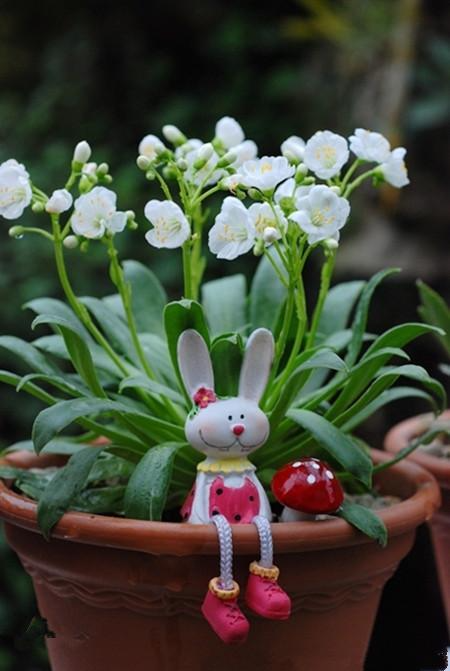
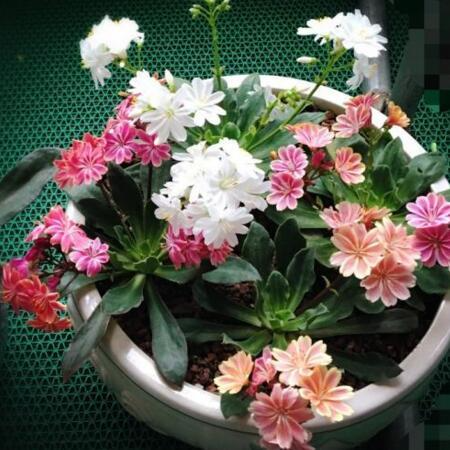
I hope this helps you. I wish you a beautiful balcony soon.
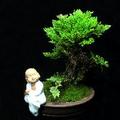 Flower Sound 11-06 13:40
Flower Sound 11-06 13:40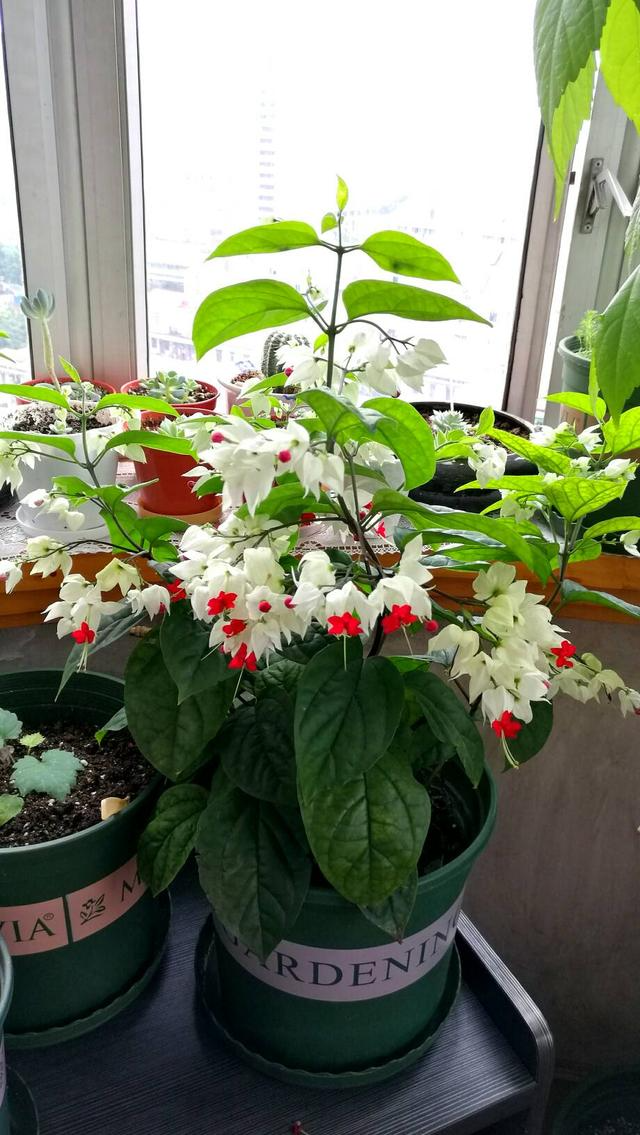
Many other people have answered a lot of excerpts from the Internet, and they are all wild flowers, unstable, and can easily die. I will just answer one, Dragon's Tongue.
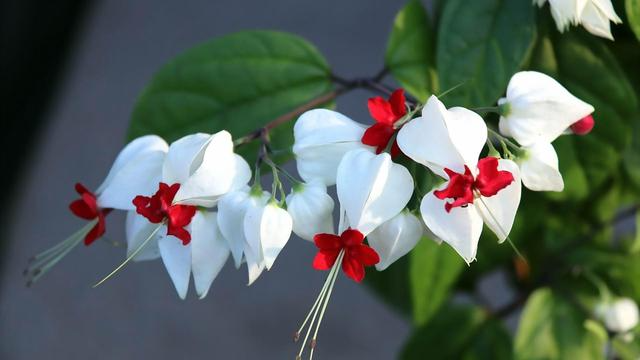
When it blooms, the crimson corolla slowly emerges from the white calyx, resembling a pearl, so the Chinese renamed it "Dragon's Throwing Pearl". It is a woody plant, an evergreen shrub, very easy to cultivate, and can survive from cuttings and bloom in the same year.
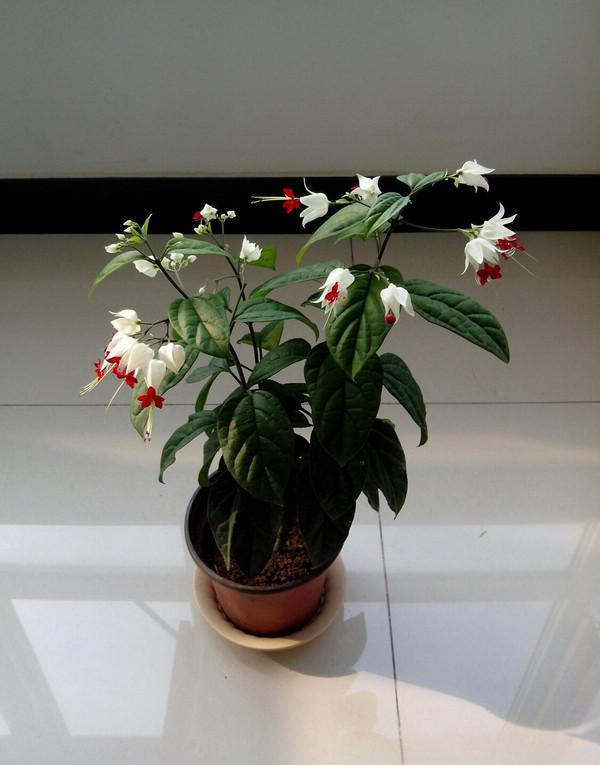
Flowers bloom continuously from childhood, all year round, provided that the balcony has enough sunlight. Of course, there is no problem with your south-facing balcony. If you want to know more, follow my Toutiao account.
 No.1 seedling 08-01 15:31
No.1 seedling 08-01 15:31Rose is known as the queen of flowers, also known as "Monthly Red", and blooms all year round. The flower language of rose is: perseverance, waiting for hope, and everlasting beauty. It is usually red or pink, and occasionally white and yellow.
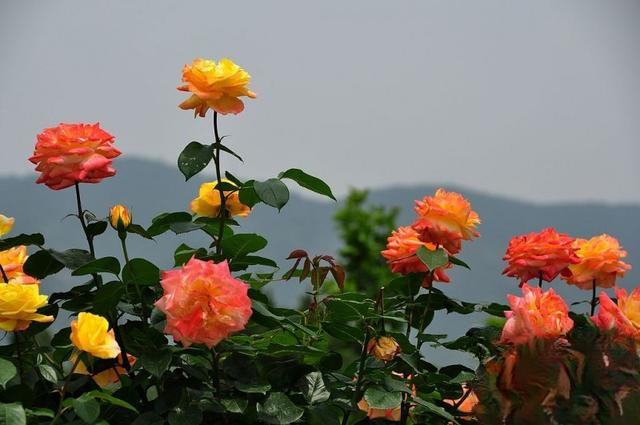
Rose is a very sun-loving plant. If you want it to bloom every month, you need to do the following:
(1) The sunshine must be long. The place where roses are planted must be well ventilated and receive more than half a day of sunshine.
(2) Prune regularly. Prune the roses after December every year when the leaves fall. The remaining branches should be about 15 cm high. The pruning position should be about 1 cm above the leaf buds that extend outwards. At the same time, remove the side branches, diseased branches, and concentric branches. After May, prune 2/3 or 1/2 of the branch that has bloomed after each flowering. This will give it more opportunities to regenerate flower buds. If you want the flowers to bloom larger, you can also remove some of the flower buds when there are many of them. This can not only concentrate the nutrients, but also achieve the purpose of extending the flowering period and blooming in batches.
(3) Fertilization should be frequent and timely. Generally, newly planted or transplanted potted roses can be cultivated in humus and loose loess. It is best to mix it with 1/4 rice husk ash or a little broad bean shell, bean cake or chicken and pigeon manure, so that the rose can continuously absorb various nutrients such as nitrogen, phosphorus and potassium from the soil. If the old potted rose needs to be repotted, basal fertilizer can also be applied in the same way; if it is not repotted, the soil surface can be dug 2-3 cm, and some fresh fish intestines or chicken and pigeon manure, bean cake crumbs, etc. can be added as basal fertilizer. This is best done in January and February when the rose is dormant. In this way, the fertilizer will gradually ferment into fertilizer liquid, which will penetrate into the roots with rainwater or watering, achieving better results. After May is the peak growth season for roses. Topdressing should be applied once every 10 days. It can be mixed with decomposed and fermented fish juice or vegetable leaf juice in a ratio of 3 parts fertilizer to 7 parts water. Fertilization should be stopped in November. If you can do it according to the above requirements, you can make the rose flowers meet you every month. Roses are afraid of heat by nature. They grow best when the temperature is 20-25 degrees; it is difficult to grow when it exceeds 30 degrees. If you master the fertilization well, you can overcome its weakness of being afraid of high temperatures in summer.
(4) Pay attention to eliminating pests. Black spot and powdery mildew are prone to occur in summer, both of which are caused by excessive humidity and heat. For mild cases, some diseased leaves can be removed; for severe cases, Bordeaux mixture or thiophanate-methyl, chlorpyrifos, etc. can be sprayed 2-3 times every 10 days for prevention and control.
(5) Repotting. Roses do not need to be repotted every year. If you change from a small pot to a large one, you can do it all year round.
 sHan Mengs08-30 23:32
sHan Mengs08-30 23:32The plant with the longest flowering period is Euphorbia milii. In Guangxi, the flowers only bloom for a few days a year, but in Yunnan and Guangdong, they bloom 365 days a year.
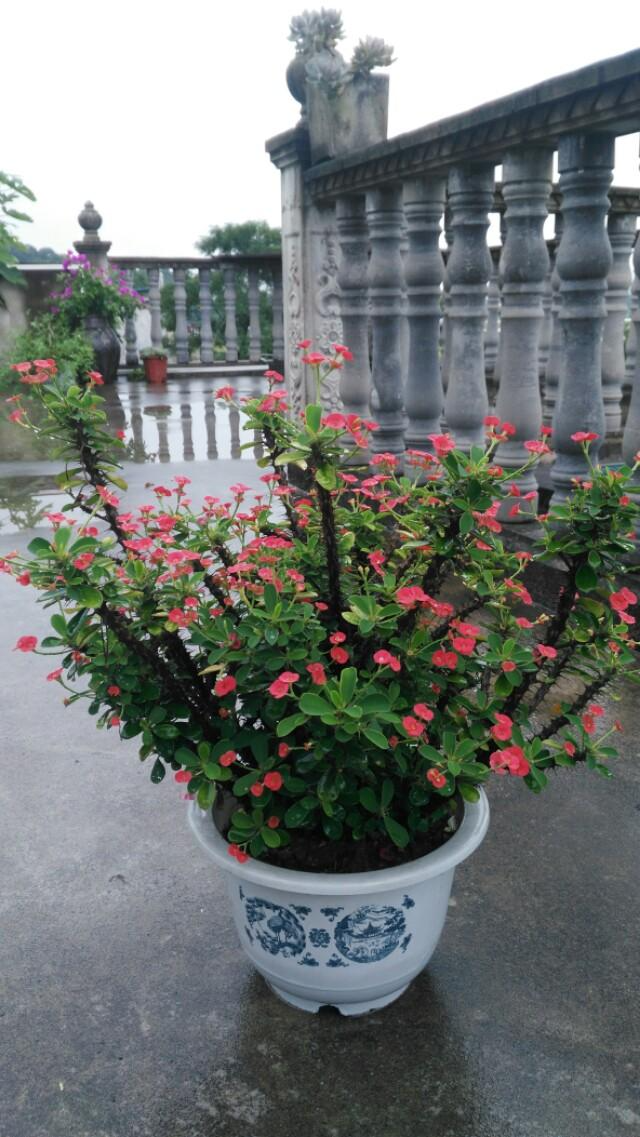
 Mobile user 605705860508-02 12:44
Mobile user 605705860508-02 12:44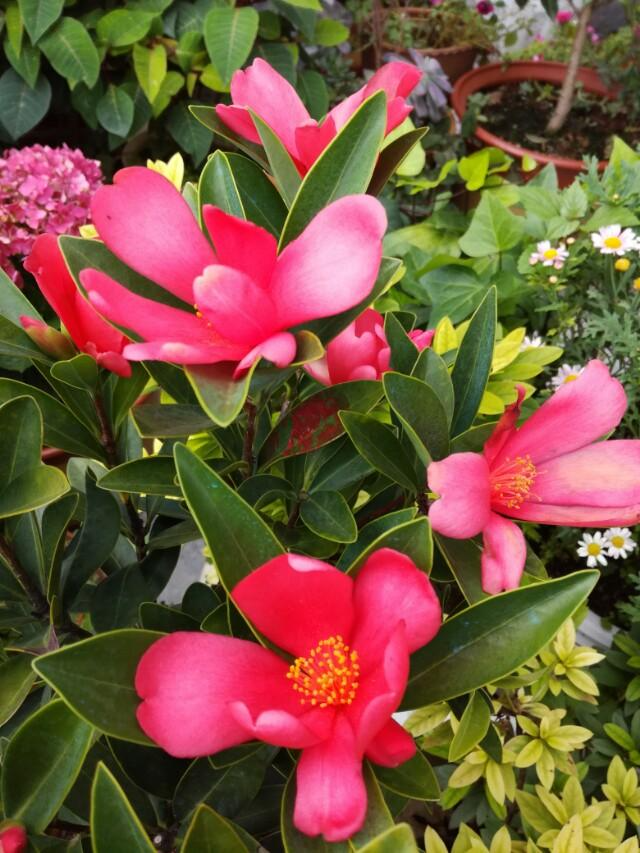
Four Seasons Red Camellia, the flowers are beautiful, the flowering period is long, and it is easy to grow...